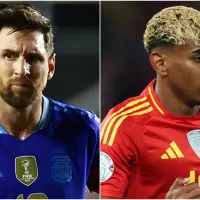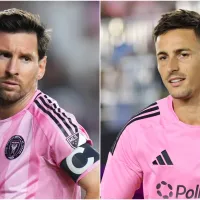Finances are always a hot button in any sport, and American soccer is no different. With a sometimes controversial system that is quite unique in an international world of football, Major League Soccer continues to do business with a salary cap that helps to keep teams from getting caught in a spiral of overspending.
Previous attempts at soccer leagues in America ran into financial pitfalls, and so the league built itself upon a certain amount of austerity. Even with the guarded spending MLS had its own share of dire financial straits a few years into its existence, forcing the league to pull back two Floridian franchises and restructure some ownership situations to bear the brunt of the shortages.
In 2007, after things started looking better for the league, MLS pushed through a needed bit of legislation. A rigid cap kept teams from breaking the bank, but Don Garber and the league saw an opportunity to increase the domestic and international profile. It would involve doing something the North American Soccer League of the 70’s and 80’s did – bring in aging, big-name international stars.
Of course the genesis of the Designated Player Rule was primarily to allow AEG and MLS to lure David Beckham to the North American continent. Before 2007, the salary cap was a composite cap on the total salary of the team. There were no restrictions on one player’s salary, aside from obviously needing to field an entire squad within an approximate $2M budget. The Designated Player Rule gave each team the chance to sign a player to any agreed-upon amount, with that player only counting $400K against the salary cap. Of course, with any rule there are exceptions, and in the case of the Los Angeles Galaxy, Landon Donovan was already making well over $400K per season. MLS grandfathered Donovan’s salary such that the Galaxy did not have to go to any great lengths to accommodate Donovan and Beckham (two other players, Dallas’ Carlos Ruiz and KC’s Eddie Johnson, also fell into this exemption, but only Dallas used this exemption to their benefit, signing Denilson to a DP salary).
At first, teams could trade their DP designation to another team, allowing a team a maximum of two. That was relaxed to two DP spots in 2010, with a $250K “tax” to add a third. More recently, a young DP (under 23) was introduced, theoretically to allow teams to bring in young international players who can develop into stars for MLS.
It’s not easy to know much about the salary status of players within MLS at this time of year. Around May, the MLS Players Union will release their salary list, which gives a glimpse into the salary situations within MLS. But MLS does have a page which lists Designated Players, and it appears to have been updated recently. Here is a list of all DP’s in the league currently (YDP = Young Designated Player):
CHI: Sherjill MacDonald; CHV: Osvaldo Minda; CMB: Federico Higuain; DCU: Rafael (YDP); FCD: David Ferrreira, Fabian Castillo (YDP); HOU: Oscar Boniek Garcia; LAG: Robbie Keane, Landon Donovan; MON: Marco Di Vaio; NER: Jerry Bengston; NY: Tim Cahill, Thierry Henry; PHI: Freddy Adu; POR: Diego Valeri, Diego Chara; RSL: Javier Morales, Alvaro Saborio; SEA: Christian Tiffert, Mauro Rosales, Shalrie Joseph; SJE: Chris Wondolowski; SKC: Claudio Bieber; TFC: Danny Koevermans; VAN: Kenny Miller.
A few things to consider:
– As of now, there is only one team in MLS that is on the books for three DPs, and that is Seattle Sounders. They took on Shalrie Joseph’s contract from Chivas USA, eating up their final spot. Teams like Toronto, DC United, New York, and Los Angeles who went all in on 2 or 3 DPs have decided to take a “wait and see” approach, to find the right fit.
– There are currently only two Young DP’s, DC’s Rafael and Dallas’ Fabian Castillo. Suffice it to say that clubs in MLS are likely still trying to decide the best tactic for using this exemption to
bring in younger talent.
– The only team without a Designated Player at the moment is Colorado.
So what to make of this trend of fewer DP’s in general? There have been a lot of DPs that have worked out poorly. If you are going to tie up $350,000 of salary cap in each DP, you’d better get something special.
Many teams have had to make tough decisions about the cap. I have a feeling this may be a clear sign that teams are feeling a pinch within the auspices of the current cap. Salaries continue to rise for the average player, and without an adjustment of the cap you may see continued shuffling of talent.
Does the cap need to be raised? Does a whole new way of capping the league’s salary structure need to be investigated? When we hear about a growing league, one would think that teams would be more willing to add Designated Players. That’s not happening, at least within 5 days of the beginning of the 2013 season.
But this isn’t a crisis or anything. I think it’s actually a sign that teams are learning the joys and pitfalls of having players that break out of the set salary structure. Teams like Los Angeles, Real Salt Lake, and Seattle have gotten the most out of these special players, while there are teams like Kansas City, San Jose, Colorado, and Houston that have found success with hardly a DP to their credit.
So the DP rule is certainly a continued help in getting top players, but teams must be careful not to eat up their budgets with unworthy players. The lack of step change in terms of the cap makes the quality of the DP signings for each team that much more crucial; that teams look for a player that seem to improve the players around him, or provides enough skill to vastly outperform a player they can get for fewer bucks. The DP questions that I see going into the 2013 season:
1) Will LA and NY fill that 3rd DP slot? Since they have tended to set the standard for making the biggest splashes in the transfer market, seeing them add another big name each could vastly swing the balance of power in each conference.
2) Will questionable DP salaries like Freddy Adu, Shalrie Joseph, and Kenny Miller be rectified one way or the other – either by better play, or by sale?
3) Can teams exploit the Young DP salary more effectively, to bring in dynamic, marketable young players that afford them more flexibility under the cap?
What do you think? Has MLS done well with the Designated Player Rule? Should they revisit the way top players enter the league? Is the Salary Cap appropriate at the moment? Join the conversation and comment below.













